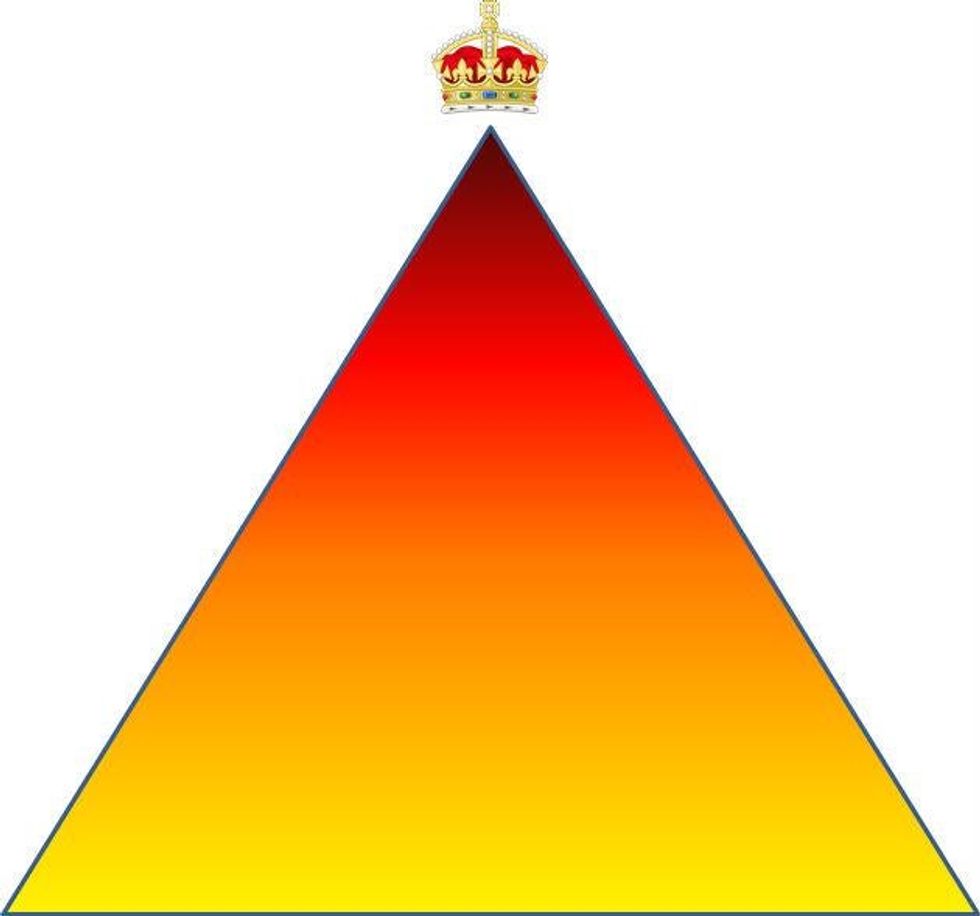Whether it’s the Brummy brogue, the Yorkshire twang or the Queen’s own English, Britain is home to hundreds of different accents.
History hasn't been kind to some of the variations, and one of the most salient examples of British classism remains its attitude towards certain accents.
In fact, in a YouGov survey almost half – 45 per cent to be exact – judged others' class based on their accent.
Writing on Quora recently, Helen Magowan demonstrated this in an accent ‘pyramid’.
Sign up to our new free Indy100 weekly newsletter
The pyramid isn't a novel concept, and is based on John Wells’ Accents of Englishdiagram, which depicts social class variation vertically, and regional accents horizontally.
The pyramid is broad at the base, since working-class accents exhibit a great deal of regional variation. It rises to a narrow point at the apex, since upper-class accents exhibit no regional variation in England.
At the very top end, in dark red, she explained, is the Queen's English, the creme de la creme of British accents.
The brighter red beneath it is reserved for what most people would call ‘posh’ - Received Pronunciation. It’s what news presenters and politicians tend to speak in.
The orange area has some regional accents, but it’s not strong. You might hear a slight twang to someone’s accent, but this area of the pyramid is still relatively uniform.
Finally, the yellow colour represents all the regional dialectical variations; from Liverpudlian accents to tiny villages in Oxford, Sussex and everywhere else in between.
The different accents also correlate with different class, historically speaking. The Royal Family is the highest you can get, followed by the aristocracy, the middle levels and finally the working class.
Of course, these distinctions are rather outdated, and do not take Scottish, Irish, Patois and slang into account.
Have your say in our news democracy. Click the upvote icon at the top of the page to help raise this article through the indy100 rankings.















